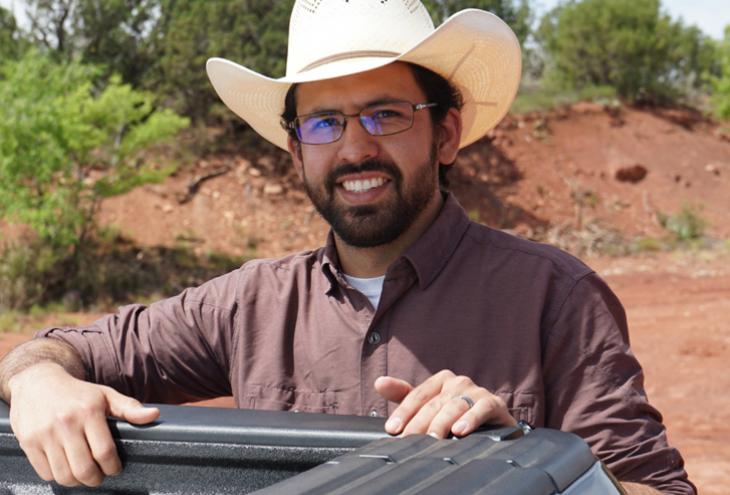Though he had no idea of it at the time, Dylan Moriarty started training for his current job at New Mexico–based Sandia National Laboratories when he was a young boy. Moriarty grew up in rural Fort Defiance, Ariz., on the Navajo Nation.
“The one resource we have plenty of is dirt,” says Moriarty, this year’s winner of the Most Promising Engineer or Scientist award. “When it would rain, I would go down to the wash and make dams and play around with the natural systems. I would also play with Legos, and though I didn’t know it at the time, what I really liked was solving problems.”
A lot has happened in the years since Moriarty was playing in the dirt, including his obtaining a BS in civil engineering from the University of Arizona and an MS in energy resources engineering from Stanford University. But at some level, Moriarty is still using the skills he unknowingly began building as a kid. Today, as a geoscience engineer at one of the nation’s premier research laboratories, Moriarty works on the challenge of infrastructure resilience — think of water networks or traffic — using spatial statistics. “I take my knowledge of Earth systems and infrastructure systems and apply statistics to gain an understanding and solve challenges,” he says.
Moriarty says that people’s eyes generally glaze over when they hear that explanation, which is why he has a handy way to illustrate what he does. Think about the weather forecasts we’ve all seen that feature heat maps showing the high and low temperatures in different states. “That data is collected from weather stations, but there aren’t data collection stations everywhere,” he explains. “Spatial statistics help you understand what’s going on in between those stations.”
Today, as a geoscience engineer at one of the nation’s premier research laboratories, Moriarty works on the challenge of infrastructure resilience using spatial statistics.
Much of Moriarty’s work at Sandia these days is geared toward promoting the resilience of the nation’s Strategic Petroleum Reserve (SPR), the world’s largest emergency supply of crude oil. Stored in huge salt dome caverns at four sites in Louisiana and Texas, the SPR is designed to store up to 713.5 million barrels of crude oil.
One of Moriarty’s jobs is to ensure the safety of these facilities by monitoring ground deformations on the surface of the land, also known as subsidence. “These are giant caverns that go down as much as a mile deep,” says Moriarty. “We can’t see what’s going on in the caverns, but one way to tell and get an indicator of cavern stability is by looking at subsidence and how it is changing, and then applying spatial statistics.”
The work is like solving complex puzzles, which is what Moriarty likes about it. There are other projects at Sandia that he enjoys, including helping with research to aid the Indian Energy Program, which investigates energy possibilities on Native land, energy sovereignty, renewables, and responsible development. “A lot of Native nations realize the energy potential on their lands, and they are sovereign nations with control over those resources,” he says. “Native nations haven’t had the best experience dealing with outside companies, and this is an effort to get people from the tribes who know the issues to work on this so they aren’t taken advantage of.”
Though his job responsibilities are extensive, Moriarty carves out a significant amount of time to mentor and encourage Native students. Since he joined Sandia in 2014, Moriarty has been involved with the American Indian Outreach Committee, which is devoted to recruiting — and retaining — Indigenous scientists in the Sandia workforce. He also has been engaged with the Dream Catchers Science Program, which introduces Native students in middle and high school to STEM.
Moriarty understands that these interactions are meant to motivate the students. But he is the one who usually comes away energized. “I’m blown away by the potential, excitement, and creativity of these young Indigenous scientists. That, combined with the disparity between the number of Native students there are and the number of scientists, motivates me,” he says. “Between excitement at their passion for engineering and this frustrating gap, I dedicated myself to helping as best I can.”











